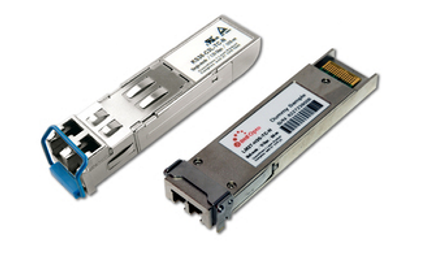optical transceiver (OT)
Optical transceivers (OT) are the counterpart to electrical transceivers. Like these, they consist of separate transmitting and receiving devices. They are electrical-optical transmitting devices and optical-electrical receiving devices.
Optical transceivers receive the optical signals from the optical fiber and convert them in O/E converters into electrical signals, which are conditioned and further processed in the optical transceiver. As receive detectors, optical transceivers use light-sensitive components such as photodiodes or phototransistors. On the transmitter side, the electrical signals are converted into optical signals in E/O converters and transmitted on the optical transmission path.
For this purpose, there are various E/O converters such as LEDs, lasers, distributed feedback lasers( DFB), VCSEL lasers and some others. Depending on the optical fiber used, there are optical transceivers for multimode fibers, gradient fibers and single mode fibers.
In addition to receiving and transmitting functions, optical transceivers have monitoring and management functions and support line codes for optical transmitters. Important characteristic values are the wavelength range, the data rate, the equivalent inherent noise and the matching values to the optical fiber.
In the different Ethernet variants, optical transceivers are used as pluggable modules. Examples are the SFP module for Gigabit Ethernet, the XFP module for 10 Gigabit Ethernet and the CFP module for 100 Gigabit Ethernet.

